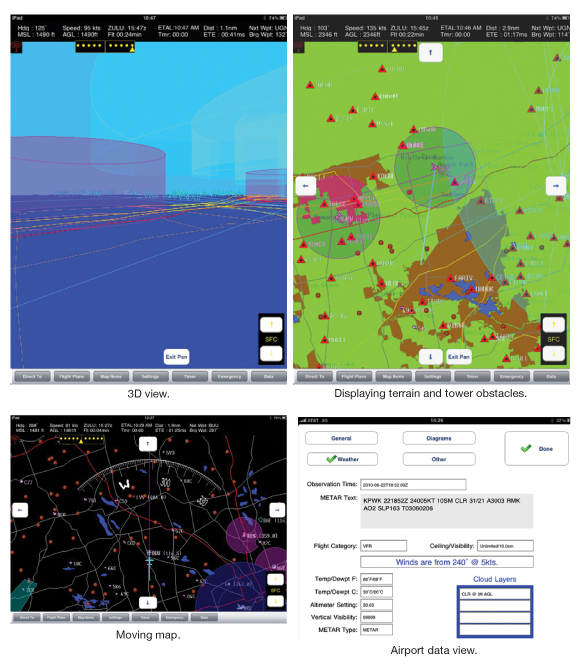by Robbie Culver
 When Apple released the iPad early in the spring of 2010, it rapidly became apparent that the new device offered unique capabilities for use in the cockpit. Since then, the iPad has begun to appear in many varied implementations in aviation.
When Apple released the iPad early in the spring of 2010, it rapidly became apparent that the new device offered unique capabilities for use in the cockpit. Since then, the iPad has begun to appear in many varied implementations in aviation.
With a large, bright screen, touch interface, and easily managed size, the iPad appeared perfectly positioned to change the EFB and portable GPS market considerably. The 3G model iPad contains a self-contained GPS, allowing for a wireless, large screen display navigation interface that has a long battery life.
As software was released for the iPad, several aviation-specific applications appeared on the market. One of these was Beacon North America by Zivosity software. I tested an iPad 3G 64GB model using Beacon North America to see how this technology and software works together in real-world use.
One problem became apparent in the cockpit, and it had nothing to do with the software. The iPad’s bright screen and shiny surface is like a mirror in the cockpit, reflecting even the slightest light that makes its way to the screen. For this reason, careful positioning and use of the iPad is critical to the successful implementation of this device in your cockpit.
Some users have also reported heat-related issues with the iPad, most notably at higher altitudes. It is also important to note that in-flight weather on an iPad relies on the 3G data signal. This signal may or may not be received at even medium altitudes, and the legality of using 3G cellular devices in the cockpit is currently not crystal clear.
Once you get past that challenge, the iPad is fantastic, and Beacon North America is a perfect match of the technology and some excellent programming. While I am not sure I would use this combination as a primary source of data in actual IFR conditions for reasons I’ll discuss later, I do believe this software/hardware combination offers an affordable and technologically advanced solution for many pilots.
Beacon offers in-flight weather, terrain, sectional data, en route charts, approach plates, and several unique features that make it a solid contender in the portable GPS market.
First off is the 3-D view, offering the ability to “see” airspace in a manner that makes interpreting the airspace position relative to your flight path and current position both easy and rapid. Another solid selling point is the software’s customizable fields for in-flight data, allowing the pilot to choose what fields are displayed in what order.
Critical to the success of any complex software is the user documentation. I found the Beacon manuals easy to use, well written, clear, concise, and effective.
The display itself is easily configured via navigation menus to enable and disable various display features such as sectional views, terrain, and obstacle data. Finding the correct mix of usable data that allows clear, concise information without excessive clutter is a very personal choice. It took me several tries to find the correct balance, and I can see where different views would be required in different phases or types of operations.
Creating and using flight plans in Beacon is extremely easy once you adjust to how the software accepts user input and is very versatile, allowing you to use various data types as flight plan waypoints. Like many other GPS applications, Beacon does not appear to offer the ability to load an airway route directly without use of the defining waypoints.
For IFR use, Beacon does offer approach plates and en route charts, and the plates do track the aircraft position accurately during the approach phase. However, serious IFR typically requires a certified GPS unit, and any interruption in service could have serious implications. For this reason, I recommend the Beacon be used only as a solid backup device in instrument conditions, and not relied on for any primary use. This has less to do with the software than it does the hardware and safety concerns.
While the application was stable and did not freeze or crash often enough to concern me, the fact that the weather relies on the 3G connection and the reflective nature of the iPad itself, combined with the possibility of a shut down due to heat or pressure related events would be enough to concern me.
For VFR use, Beacon is a fantastic tool. It is a great addition to the cockpit for a pilot looking for a technologically advanced solution, and the iPad itself is a powerful tool outside of the Beacon application for pilots of any experience level. I recommend Beacon for the pilot looking for an iPad GPS application that offers reliable, stable operation, ease of use, and advanced features at a reasonable price.
Beacon is available through the Apple Store online.